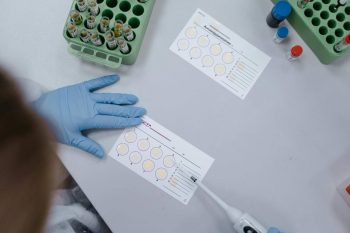In relation to the transmission of the coronavirus in restaurants, only two studies conducted in China and South Korea have been published.
In China, an outbreak occurred in a restaurant in the city of Guangzhou. A diner infected several people who were sitting at other tables 2-3 meters apart in the same room (6 meters long). People who were infected stayed in the restaurant for 53-73 minutes. The coronavirus infection most likely occurred through respiratory droplets expelled by the infected diner.
There are two types of drops that are eliminated when breathing; Some larger (more than 5 microns) that remain floating in the air for a very short time and travel less than a meter and others smaller (less than 5 microns) that stay longer in the air and can travel greater distances (more than 1 meter). It was considered that these types of drops were the ones that infected the other people.
Despite the fact that the distance between the tables was greater than 2 meters, the authors concluded that the drops travelled that distance due to the flow of air emitted by the air conditioning unit. The key factor, as it turned out, was the direction of that air flow produced by the device.
Importance of air flow direction
Also in Korea, another coronavirus infection was described in a restaurant. In this case, one of the people who was infected was sitting 6.5 meters away from the infected person and they only met for 5 minutes. Another diner at another table, 4.8 meters away, was also infected by exposure for 21 minutes. These infections were attributed to the direction of the air conditioning flow, which had a speed of 3.6 km / hour.
In summary, in restaurants despite maintaining a safe distance, coronavirus can be transmitted through the flow of air conditioning. What has not been proven is whether the same can occur on terraces through natural air.
For all this, it is recommended that in addition to taking all the known measures (distance, mask, etc.), restaurants should try not to use air conditioning or, if they do, verify that the orientation of the air flow does not affect the diners to prevent the spread of the virus.
Finally, it is important to note that a study published in February in the journal Science has shown that restaurant closures have a small or moderate effect on the transmission rates of the coronavirus




